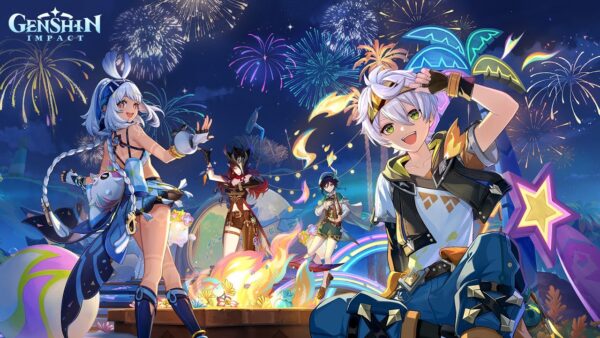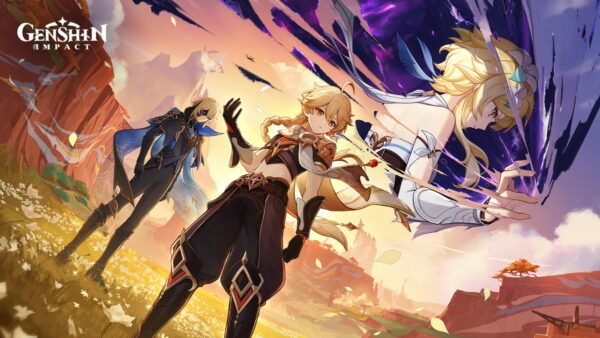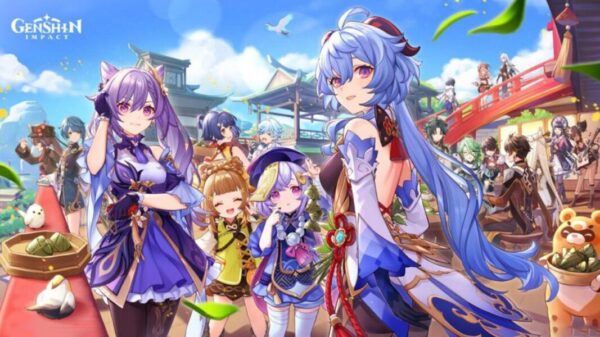Popular Now
Introduction
Genshin Impact blends action combat, beautiful exploration, and RPG mechanics with a core system that underpins nearly every aspect of the game: RNG, or Random Number Generation. From artifact stats to weapon pulls and even boss material drops, RNG defines how quickly — or painfully — players progress. While randomness adds excitement and variety, in Genshin, it often crosses the line into frustration and burnout. In this article, we’ll examine how RNG works across the game’s core systems, why it often undermines player agency, and how it could be improved without breaking Genshin’s economy.
1. RNG in the Gacha System: The First Layer of Luck
At the heart of Genshin’s monetization is its gacha system. Players use Primogems to pull from character and weapon banners. Every 10 pulls guarantees a 4-star or higher item, and a 5-star is guaranteed every 90 pulls, with a 50/50 chance of it being the promoted character.
While this “pity system” is more generous than many gacha games, it’s still highly luck-based. Many players lose 50/50s or get spooked by standard characters, which can feel like wasted Primogems after weeks of saving. The emotional highs of winning and the crushing lows of losing create a loop that rewards gambling more than planning.

2. Weapon Banners: The True RNG Nightmare
Compared to character banners, weapon banners are significantly worse. The Epitomized Path attempts to provide protection by guaranteeing a weapon after three failed attempts, but this means spending up to 240 pulls (roughly 38,400 Primogems) to guarantee a specific 5-star weapon.
This high risk, high cost structure:
-
Discourages free-to-play players from even attempting weapon banners.
-
Punishes unlucky spenders.
-
Leads to regret even among those who eventually get the desired weapon.
The result? Many players avoid this banner entirely or stick to the few strong 4-star options, limiting build diversity.
3. Artifact Farming: The RNG Within RNG
Artifact domains are perhaps the most discussed RNG sink in the game. Players spend 20 Resin per run, hoping to get a 5-star artifact from the correct set, with ideal main stats, and even better substats. That’s four layers of randomness in a single drop.
The process becomes exhausting:
-
You get the wrong set.
-
Or the wrong main stat (like DEF% on a Gladiator’s Feather).
-
Or poor substats like flat HP, flat DEF, or low-value rolls.
-
Or worse, the artifact levels into bad stats.
This system means that fully optimizing a character often takes months. Theoretically, the best artifact might never drop, no matter how much you play. For a system so essential to combat, it punishes dedication more than it rewards it.
4. Weekly Bosses and Random Material Drops
To ascend characters and talents, players need specific materials from weekly bosses. These include drops like Dvalin’s Claw, Childe’s Shadow, or Raiden’s Molten Moment. The catch? These materials drop randomly. You may need one type and get another five times in a row.
This randomness delays character progression. Even with all other resources ready, a player might be stuck because they didn’t get the right boss drop that week. While crafting conversions now exist (e.g., Dream Solvent), it still doesn’t eliminate the underlying RNG problem — it just softens it slightly.

5. RNG in Weapon Refinement and Domain Drops
Many 4-star weapons can be refined by obtaining duplicates. However, because they drop randomly from wishes or the weapon banner, refining them isn’t always realistic. This randomness creates huge performance gaps between players with R1 vs R5 versions of the same weapon.
Similarly, talent books and weapon ascension materials come from domains with rotating availability. While the exact item is guaranteed, the quantity and quality of drops depend on RNG, especially before reaching higher world levels. This adds another layer of unpredictability to farming.
6. The Psychological Toll of Bad RNG
What makes RNG in Genshin especially harmful is its emotional toll. When you spend hours farming for a single artifact upgrade and end up with a piece that rolls into flat DEF three times, it’s demoralizing. For some players, it creates a sense of learned helplessness — no matter what they do, progress is up to luck.
This frustration can lead to:
-
Burnout.
-
Guilt over “wasting” Resin.
-
Reduced enthusiasm for experimentation.
-
Comparisons with luckier friends or content creators.
In a game that rewards long-term play, this kind of mental fatigue works against player retention and satisfaction.
7. The Meta and RNG’s Unholy Alliance
The Genshin community heavily emphasizes performance metrics — with tier lists, Abyss clear times, and DPS showcases dominating YouTube and Reddit. To compete in this space, players feel pressured to obtain perfect artifact sets and 5-star weapons, most of which are locked behind layers of RNG.
This turns casual theorycrafting into a lottery. Even if you have the right character and build knowledge, you might underperform simply due to poor luck. In effect, RNG not only limits progression but actively blocks competitive parity between players.

8. Mitigation Systems That Help — but Not Enough
To combat some of the worst RNG issues, HoYoverse has introduced systems like:
-
The Strongbox (convert 3 artifacts into one of a chosen set).
-
Dream Solvent (convert boss drops).
-
Pity systems on banners.
-
Artifact inventory filters and lock features.
While appreciated, these systems are band-aids rather than structural fixes. They reduce frustration slightly but don’t give players any true agency. The underlying randomness still defines the experience, and mitigation doesn’t always scale with effort.
9. Community Coping Mechanisms and Culture
Over time, players have developed coping mechanisms for dealing with RNG:
-
Tracking artifact attempts through spreadsheets.
-
Sharing “pain posts” of bad rolls.
-
Celebrating small wins as major milestones.
Some even find joy in the chaos — “meme builds” or “trash-to-treasure” artifact challenges create new goals from bad luck. But this culture only highlights how extreme the randomness has become: players have learned to laugh at their suffering instead of expect consistency.
10. Designing a Better RNG Future for Genshin
Randomness isn’t inherently bad. It creates suspense, variety, and replayability. But in Genshin Impact, RNG too often replaces skill or effort with chance. To preserve the game’s long-term health, HoYoverse could introduce systems that add more control over outcomes.
Ideas include:
-
An artifact crafting system: fuse low-quality artifacts into a chosen piece with targeted substats.
-
A soft pity system for domain drops: better odds the more times you run a domain without a good result.
-
Token systems: earn shards from domains and trade them for perfect artifacts.
These wouldn't destroy the economy — they’d simply reward consistency and provide hope. Right now, Genshin's RNG asks players to work endlessly and accept failure as the norm. That’s unsustainable.
Conclusion
RNG is at the core of Genshin Impact’s design, from gacha pulls to artifact stats. While it adds excitement and unpredictability, it often crosses into unhealthy territory, denying player progress and undermining effort. Whether you’re farming artifacts, pulling for characters, or refining weapons, you’re always rolling the dice — and sometimes losing, no matter how hard you try. Without more control and better systems to soften bad luck, RNG will continue to be Genshin’s most controversial mechanic — and its most dangerous one.


















